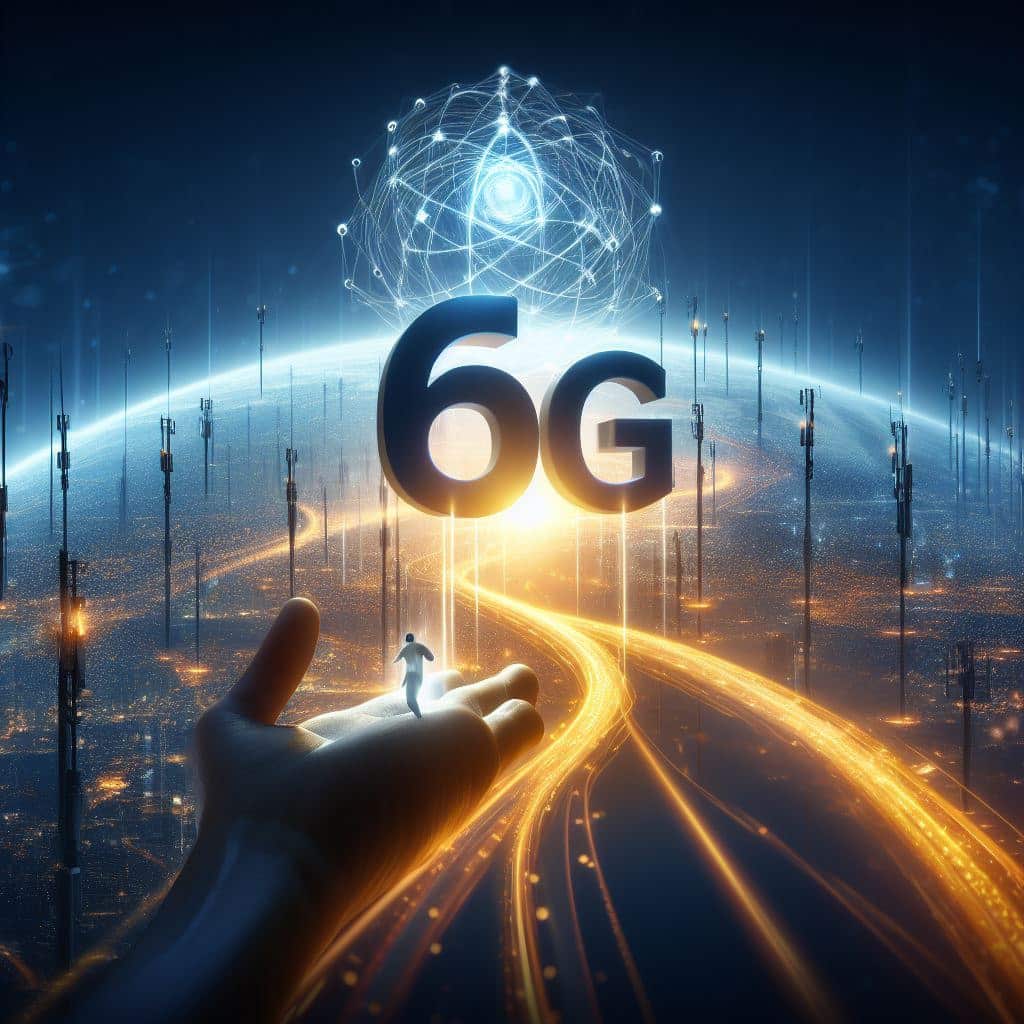The Promise of 6G: Pushing the Boundaries of Connectivity
In this fast-paced digital era, where technology is advancing at an unprecedented rate, the need for faster and more reliable connectivity has become paramount. With 5G networks gradually being implemented worldwide, there is already talk about the next generation of wireless communication: 6G. The promise of 6G is to push the boundaries of connectivity even further, enabling groundbreaking applications and revolutionizing various industries. In this article, we will explore the potential of 6G and the possibilities it holds for the future.
Table of Contents
- Introduction
- Understanding 6G Technology
- Advancements in Speed and Capacity
- Ultra-Low Latency and Enhanced Reliability
- Massive Machine-Type Communications (mMTC)
- Tactile Internet and Haptic Communication
- 6G and Augmented Reality/Virtual Reality (AR/VR)
- Impact on Autonomous Systems and Artificial Intelligence
- 6G and Internet of Things (IoT)
- Security and Privacy Considerations
- Ethical Implications of 6G
- Challenges in Implementing 6G
- The Timeline for 6G Deployment
- Conclusion
- FAQs
1. Introduction
With the world becoming increasingly interconnected, the demand for faster and more reliable connectivity continues to grow. As we move towards a future that relies heavily on the Internet of Things (IoT), autonomous systems, and artificial intelligence, the need for a transformative wireless network becomes evident. This is where 6G comes into play.
2. Understanding 6G Technology
6G refers to the sixth generation of wireless communication technology, which is expected to surpass the capabilities of its predecessor, 5G. While 5G has revolutionized the way we connect and communicate, 6G aims to take it a step further by introducing cutting-edge features and capabilities.
3. Advancements in Speed and Capacity
One of the primary goals of 6G is to provide significantly faster data speeds and increased network capacity. With speeds projected to reach terabits per second, downloading and uploading large files, streaming high-definition content, and engaging in real-time applications will become even more seamless.
4. Ultra-Low Latency and Enhanced Reliability
6G aims to achieve ultra-low latency, ensuring minimal delays in data transmission. This will be particularly crucial for applications that require real-time responsiveness, such as autonomous vehicles, remote surgery, and virtual reality gaming. Additionally, 6G will offer enhanced reliability, reducing the chances of network outages and disruptions.
5. Massive Machine-Type Communications (mMTC)
The rise of the IoT has resulted in an exponential increase in connected devices. 6G will facilitate massive machine-type communications, allowing for seamless connectivity and communication between billions of devices. This will unlock new possibilities in various sectors, including smart cities, healthcare, agriculture, and logistics.
6. Tactile Internet and Haptic Communication
Imagine being able to remotely experience touch and physical sensations through the internet. 6G promises to bring this concept to life with the advent of tactile internet and haptic communication. This innovation has vast implications for fields such as telemedicine, remote collaboration, and immersive virtual experiences.
7. 6G and Augmented Reality/Virtual Reality (AR/VR)
The combination of 6G and augmented reality/virtual reality (AR/VR) opens up new realms of possibility. With ultra-fast speeds, low latency, and high capacity, AR/VR experiences will become more immersive and realistic than ever before. This will revolutionize entertainment, education, training, and various industries that heavily rely on virtual experiences.
8. Impact on Autonomous Systems and Artificial Intelligence
Autonomous systems, including self-driving cars and drones, heavily rely on real-time data and seamless communication. 6G will provide the necessary infrastructure for these systems to operate efficiently, ensuring improved safety and performance. Moreover, the integration of 6G with artificial intelligence will enable faster decision-making, making autonomous systems smarter and more reliable.
9. 6G and Internet of Things (IoT)
The IoT has already transformed the way we live and work, but its full potential has yet to be realized. With 6G, the IoT will be taken to new heights. The increased speed, capacity, and reliability of 6G networks will enable a seamless and interconnected ecosystem of smart devices, creating opportunities for innovative applications in various sectors.
10. Security and Privacy Considerations
As the number of connected devices and the amount of data exchanged increases, ensuring robust security and privacy measures becomes crucial. With 6G, advancements in encryption, authentication, and network slicing will address these concerns and provide a more secure environment for users and organizations.
11. Ethical Implications of 6G
With any technological advancement, ethical considerations come into play. As 6G unlocks new possibilities and reshapes industries, it is essential to address potential ethical implications. These include issues related to data privacy, surveillance, algorithmic biases, and equitable access to technology.
12. Challenges in Implementing 6G
While the potential of 6G is vast, there are significant challenges to overcome in its implementation. These challenges include developing the necessary infrastructure, standardizing protocols, ensuring global compatibility, and managing spectrum resources effectively.
13. The Timeline for 6G Deployment
Although 6G is still in the early stages of development, researchers and industry experts are actively working towards its realization. While it is challenging to predict an exact timeline, some estimations suggest that 6G networks could start to roll out commercially by the late 2020s or early 2030s.

14. Conclusion
The promise of 6G is to revolutionize connectivity, enabling unprecedented speeds, ultra-low latency, and seamless communication between billions of devices. With its transformative capabilities, 6G has the potential to reshape various industries, unlock new applications, and drive innovation. However, realizing the full potential of 6G requires addressing technical challenges, ethical considerations, and ensuring equitable access to technology.
FAQs
Q1: When can we expect 6G to become widely available?
The exact timeline for the widespread availability of 6G is uncertain. However, commercial deployments are expected to start in the late 2020s or early 2030s.
Q2: How will 6G impact the Internet of Things (IoT)?
6G will significantly enhance the capabilities of the Internet of Things (IoT). It will provide faster speeds, increased capacity, and seamless connectivity, enabling innovative applications across various sectors.
Q3: What are the ethical implications of 6G?
Ethical implications of 6G include concerns related to data privacy, surveillance, algorithmic biases, and equitable access to technology. It is crucial to address these issues as the technology advances.
Q4: Will 6G improve virtual reality experiences?
Yes, 6G will greatly improve virtual reality experiences. With its ultra-fast speeds, low latency, and high capacity, AR/VR applications will become more immersive and realistic.
Q5: What are the challenges in implementing 6G?
Implementing 6G faces challenges such as developing the necessary infrastructure, standardizing protocols, ensuring global compatibility, and effectively managing spectrum resources.
